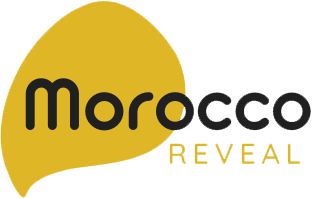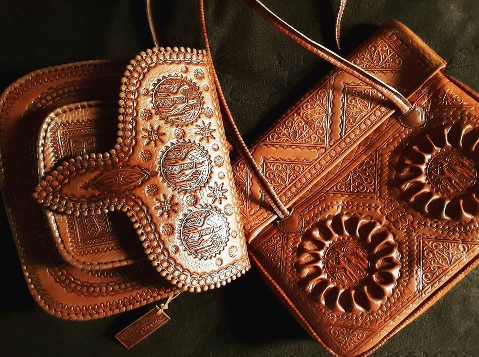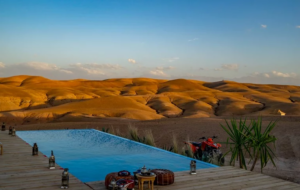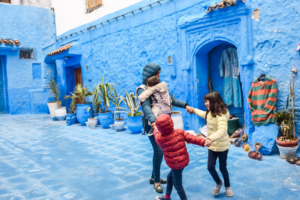Camel leather, known for its durability and distinctive texture, is sourced from the hides of camels, animals that have long been revered in Moroccan heritage. Skilled artisans carefully tan and dye the leather using natural pigments, a process that results in a range of earthy tones and rich hues that are characteristic of Moroccan camel leather goods.
The Significance of Camel Leather in Moroccan Culture
Camel leather holds a special place in Moroccan culture, symbolizing tradition, resilience, and the nomadic way of life. Camels have been integral to Moroccan society for generations, providing transportation, sustenance, and inspiration for the intricate leather goods that are crafted with care and expertise.
Moroccan artisans create a variety of exquisite items from camel leather, each with its own charm and purpose. Some popular camel leather items include:
Camel Leather Bags: Handcrafted bags made from camel leather are not only practical but also exude a sense of luxury and sophistication. From crossbody bags to backpacks, each piece is a blend of traditional craftsmanship and contemporary design
Camel Leather Shoes:

Moroccan camel leather shoes are known for their comfort, durability, and style. From sandals to boots, these footwear options are crafted with precision and attention to detail, making them a sought-after accessory.Moroccan leather shoes and slippers come in a variety of styles, each reflecting the diverse influences and cultural heritage of the region:
Babouche Slippers: Babouche slippers are perhaps the most iconic Moroccan footwear, known for their pointed toes and collapsible heel. These soft, slip-on shoes are often embellished with intricate embroidery or metallic accents, making them a stylish and comfortable choice for both indoor and outdoor wear.
Traditional Moroccan Sandals: Leather sandals are another staple of Moroccan footwear, offering a blend of comfort and elegance. Handmade with fine leather and often featuring decorative details, these sandals are perfect for warm climates and casual outings.
Modern Leather Shoes: In addition to traditional styles, Moroccan artisans also create modern leather shoes that cater to contemporary tastes. From loafers and oxfords to boots and sneakers, these shoes combine the rich heritage of Moroccan craftsmanship with modern design sensibilities.
Camel Leather Poufs:
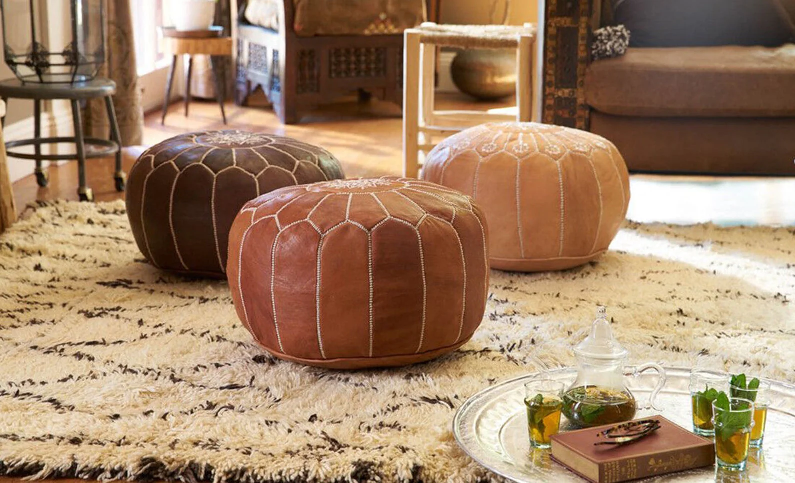
These versatile and decorative poufs made from camel leather are a staple in Moroccan homes. They add a touch of elegance and charm to any living space, embodying the warmth and hospitality of Moroccan culture.Moroccan craftsmanship, leather poufs stand out as iconic symbols of comfort, luxury, and artistry. From the bustling markets of Marrakech to the serene riads of Fez, these versatile and decorative pieces embody the rich tradition of Moroccan leatherwork and the skilled hands of artisans who create them.Moroccan leather poufs are not just decorative pieces; they also serve a practical purpose in Moroccan homes and spaces. These versatile items can be used as extra seating, footrests, or even as low tables when topped with a tray.
Moroccan leather accessories, including belts, wallets, and jewelry, exemplify the artistry and attention to detail that define Moroccan leatherwork. Embellished with hand-tooled designs and rich colors, these accessories are expressions of style and sophistication.
The Tanning Process
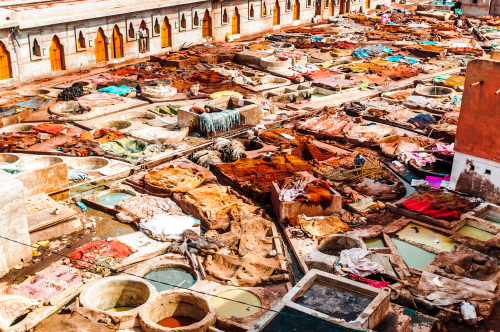
The journey of Moroccan leather begins in the tanneries, where raw hides are transformed into supple, richly colored leather through a meticulous process that blends tradition with innovation. One of the most iconic tanneries in Morocco is the Chouara Tannery in Fes, where leather is still tanned using methods that have remained largely unchanged for centuries.
Moroccan leather items are more than just products; they are embodiments of a rich cultural heritage, a celebration of craftsmanship, and a testament to the enduring allure of handmade goods. From the souks of Marrakech to the workshops of Fez, the artistry and skill of Moroccan leather artisans continue to captivate and inspire, offering a glimpse into a world where tradition and creativity converge to create beauty that transcends time.
